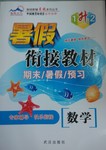题目内容
This is a true story of how my car got stuck in water and how a stranger helped me during the worst rain storm.
Last Sunday, the sky was grey when I woke up. The weather report said rain was coming, but I couldn’t stay home just because of rain.
Around 8:00 am I had a doctor’s appointment. It wasn’t raining then. At 9:00 I left the doctor’s office to drive to work, and it was raining hard. I just had to go about 5-6 miles down one main road to get to a nearby school, where I could stay until the rain ended. Unfortunately, the road in front of the school was flooded, and my car stopped in the middle.
“Who is going to save me?” I wondered. I shut off the engine and turned on my flashers (车灯). I called 911. They were not helpful. I called my husband, even though he couldn’t come and help me. I was also very close to a police station. But I never saw even one police car. I decided to get out of the car, since it was still pouring.
My best decision of the day had been to wear rain boots. I took my umbrella and quickly got out and ran across the street to a shelter.
Before long, a tow truck(拖车) happened to pass by the street. The driver kindly offered to help me. At that moment, I really needed car pulled out quickly, so I trusted the stranger. He pulled my car and drove me home. After he had dropped my car off, he also helped me check the engine. He said the engine was most likely flooded, but fortunately there was no water inside the car.
Although many years have passed, I still remember that stormy day and the warm-hearted stranger clearly.
1.How was the weather when the author got up?
A. Rainy. B. Cloudy. C. Windy. D. Sunny.
2.Which of the following is the correct order about the things that the author did?
① Drove to work. ② Drove to the doctor’s office.
③ Ran to a shelter. ④ Called 911 for help.
A. ②①④③ B. ②③①④ C. ①②④③ D. ①③②④
3.What did the author do after her car had got stuck in the water?
A. She turned off her flashers.
B. She tried to restart the engine.
C. She went to the police station nearby.
D. She got out of her car.
4.How did the stranger help the author?
A. He lent his car to her.
B. He pulled her car out of the water.
C. He drove her to school.
D. He helped her fix her engine.
1.B
2.A
3.D
4.B
【解析】
试题分析:这是一个真实的故事,作者的车陷进了泥坑里,一个好心的陌生人帮助作者把车拖了出来。在一个下暴雨的一天,作者在去上班的路上遇到了大水,汽车无法前进。在孤独无助的时候,一个陌生人用拖车帮助了作者,作者非常感激那个热心的人。
1.根据第二段“the sky was grey when I woke up...rain was coming”可知,作者起床时天灰蒙蒙的,天气预报说有雨。故选B。
2.根据第三、四、五段的“Around 8:00 am I had a doctor’s appointment. It wasn’t raining then. At 9:00...I left the doctor’s office to drive to work...I called 911...ran across the street to a shelter”可知,事情发生的顺序是,去看医生,然后开车去上班,遇到洪水拨打119,跑到对面避雨。故选A。
3.根据第四段和第五段“I shut off the engine and turned on my flashers (车灯)...I took my umbrella and quickly got out and ran across the street to a shelter”可知,作者熄灭发动机,打开车灯,跑出车去避雨。故选D。
4.根据倒数第二段“a tow truck(拖车) happened to pass by the street. The driver kindly offered to help me.
He pulled my car and drove me home...he also helped me check the engine”可知,一个陌生人帮作者把车拖了出来并把作者带回了家。故选B。
考点:生活类短文阅读

 暑假衔接教材期末暑假预习武汉出版社系列答案
暑假衔接教材期末暑假预习武汉出版社系列答案 假期作业暑假成长乐园新疆青少年出版社系列答案
假期作业暑假成长乐园新疆青少年出版社系列答案Let children learn to judge their own. A child who learns to talk does not learn by being corrected all the time; if corrected too much, he will stop talking. He notices a thousand times a day the difference between the language he uses and the language those around him use. Little by little, he makes the necessary changes to make his language like other people’s, in the same way, children learn to do all the other things without being taught—to walk, run, climb, ride a bicycle—compare their own performances with those of more skilled people, and slowly make the needed changes. But in school we never give a child a chance to find out his mistakes if we thought that he would never notice a mistake unless it was pointed out to him, or correct it unless he was made to. Let him work out, with the help of other children if he wants it, what this word says, what the answer is to that problem, whether this is a good way of saying or doing this or not. If it is a matter of right answers, as it may be in mathematics or science, give him the answer book. Let him correct his own papers. Why should we teachers waste time in doing such work? Our job should be to help the child when he tells us that he can’t find the way to get their own understanding, how to know what they know or do not know.
1.According to the passage, the best way for children to learn things is ___
|
A.to listen to skilled people’s advice |
|
B.to ask older people many questions |
|
C.to make mistakes and have them corrected |
|
D.to do what other people do |
2.According to the writer, teachers in school should ___
|
A.allow children to learn from each other |
|
B.point out children’s mistakes whenever they are found |
|
C.correct children’s mistakes as possible as they can |
|
D.give children more book knowledge |
3.Which of the following does the writer think teachers should not do?
|
A.Give children correct answers |
|
B.allow children to make mistakes |
|
C.Point out children’s mistakes |
|
D.Let children judge their own work |
4.The passage suggests that learning to speak and learning to ride a bicycle are ___.
|
A.different from learning other skills |
|
B.the same as learning other skills |
|
C.more important than other skills |
|
D.not really important skills |
It was Monday. Mrs. Smith's dog was hungry , but there was not any meat in the house.
Considering that there was no better way. Mrs. Smith took a piece of paper, and wrote the following words on it:“Give my dog half a pound of meat.”Then she gave the paper to her dog and said gently:“Take this to the butcher(* person whose job is selling meat)and he's going to give you your lunch today.”
Holding the piece of paper in its mouth, the dog ran to the butcher's. It gave the paper to the butcher. The butcher read it carefully, recognized that it was really the lady's handwriting and soon did it as he was asked to. The dog was very happy, and ate the meat up at once.
At noon, the dog came to the shop again. It gave the butcher a piece of paper again. After reading it, he gave it half a pound of meat once more.
The next day, the dog came again exactly at noon. And as usual, it brought a piece of paper in the mouth. This time, the butcher did not take a look at paper, and gave the dog its meat, for he had regarded the dog as one of his customers.
But, the dog came again at four o'clock. And the same thing happened once again. To the butcher's more surprise, it came for the third time at six o'clock, and brought with it a third piece of paper. The butcher felt a bit puzzled . He said to himeself,“This is a small dog. Why does Mrs. Smith give it so much meat to eat today?”
Looking at the piece of paper, he found that there were not any words on it!
1.Mrs. Smith treated her little dog quite .
|
A.cruelly |
B.fairly |
C.kindly |
D.friendly |
2.It seemed that the dog knew well that the paper Mrs. Smith gave it .
|
A.might do it much harm |
B.could do it much good |
|
C.would help the butcher |
D.was worth many pounds |
3.The butcher did not give any meat to the dog .
|
A.before he felt sure that the words were really written by Mrs. Smith |
|
B.when he found that the words on the paper were not clear |
|
C.because he had sold out all the meat in his shop |
|
D.until he was paid enough by Mrs. Smith |
4.From its experience, the dog found that .
|
A.only the paper with Mrs. Smith's words in it could bring it meat |
|
B.the butcher would give the meat to it whenever he saw it |
|
C.Mrs. Smith would pay for the meat it got from the butcher |
|
D.a piece of paper could bring it half a pound of meat |
5.At the end of the story, you'll find that .
|
A.the dog was clever enough to write on the paper |
|
B.the dog dared not go to the butcher's any more |
|
C.the butcher was told not to give any meat to the dog |
|
D.the butcher found himself cheated by the clever animal |
